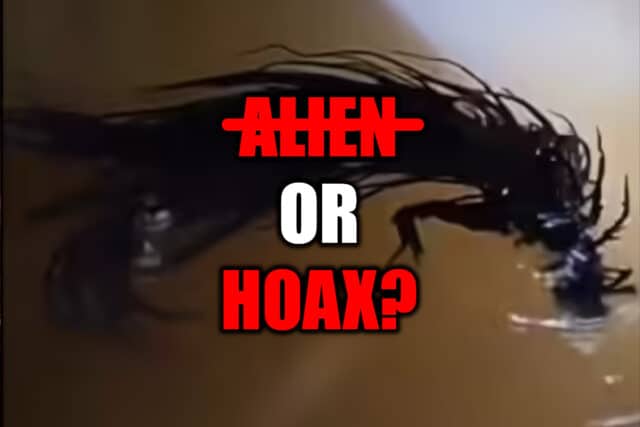
A bizarre viral sensation that gripped social media for weeks has officially been exposed as fiction.
The Parque Natural Metropolitano in Panama published a statement declaring the meteorite and alien claims “totally false,” confirming the viral content “corresponds only to a fictional narrative created by the user and does not represent real events.”
The story began August 29, 2025, when TikTok user @kinpanama posted footage of what he claimed was a meteorite that crashed in Pedregal, Panama. The rock appeared to sprout a gelatinous, greenish-yellow growth resembling algae that darkened and expanded into a form viewers likened to Marvel’s Venom. The clips exploded across TikTok and X, amassing tens of millions of views and sparking fevered speculation about alien life on Earth.
@new6867 The alleged Alien Symbiote from the recently released Panamameteorite was spotted adapting and moving in the water.It was released just a tew days ago with many thinking itwasn't going to stvive in the new environment, but it seemedto adapt quick as it was seen swimming in the pond of water ltwas left in.#alliens #meteorite #kinpanama #latinostiktok#typ ♬ original sound – New
The Internet Debunks The Alien
A Reddit user provided a scientific explanation identifying the mysterious black substance as polydimethylsiloxane (PDMS), a silicone-based polymer combined with hexane, an organic solvent, both widely used in everyday applications from medical implants to cookware.
The unsettling “wiggling” and “breathing” movements were attributed to swelling-induced snapping motion—when PDMS absorbs hexane, it swells, and as the solvent evaporates, different parts contract at uneven rates, creating sudden movements that appear organic. Scientists have long studied this behavior for practical uses in soft robotics and artificial muscles.
Red Flags Everywhere
Early videos were deleted, notably one showing the meteorite crash site where matches could be seen in the small flaming crater. Viewers also noted the carelessness with which the creator handled what he claimed was an extraterrestrial creature—touching it with bare hands, no masks, no basic precautions.
The creator’s TikTok bio at one point stated the series was “NOT REAL” for entertainment purposes, though this was later changed. UFO researcher and filmmaker Chris Lee analyzed the videos and concluded the tentacles were “a clever prop made of Polydimethylsiloxane (PDMS),” while the footage of the meteorite burning leaves used camera tricks and editing.
A Cautionary Tale
What captivated millions as a terrifying or wondrous display of alien biology was, in fact, an elegant demonstration of materials science. Some observers believe the hoax may have been intended as environmental commentary, given the creator’s previous content highlighting pollution in Panama. Others see it as pure entertainment or a bid for viral fame.
The incident serves as a stark reminder of how easily convincing fiction can masquerade as fact in the social media age. While the creativity behind the videos deserves recognition, the episode underscores the importance of critical thinking and verification before accepting extraordinary claims.
No scientific institution has confirmed examining any samples, and no meteorite tracking services recorded space debris falling in Panama that August.
The “Venom meteorite” joins a long list of viral hoaxes that blur the line between entertainment and reality, leaving millions to wonder what they can truly believe online.











